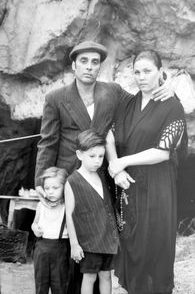It is not often that one witnesses an exhibition curator pushing a large black projection box balanced precariously on bicycle wheels through the streets of Florence. It is also decidedly rare to see the side of the Duomo being appropriated as a make-shift screen for an independent short film. And one has to find the world’s smallest cinema in order to watch its films—but how often do we think to look for the movie-going experience in a parking lot?
This fall, ‘film on the move’ is taking over Florence—streets, piazzas, palaces, and open spaces of all shapes and sizes. On the evening of Oct. 5, the International Guerilla Film Festival (IGVFest) enjoyed its inaugural presentation. The Florentine show was inspired by the Graffiti Research Lab’s ‘projection bombing’—a project where temporary digital ‘graffiti’ was shot onto New York city structures. The festival’s curator, Jason Waite, ‘bombed’ Florence with the video art of ten Italian and international artists, thanks to a provisional projector crafted out of a laptop, a car battery and jumper cables. The festival began at Fortezza da Basso and moved to the wall of the Santa Maria Novella station and the scaffolding of Santa Maria Novella. Images were then shot onto the white front of a garbage dumpster behind Mercato Centrale, and later took over the façade of the Duomo in an hour-long grand finale. The entire projection system took a mere 60 seconds to set up and pull down at each location. The program had originally allowed for only one film at the Duomo in anticipation of possible protests from the city’s urban guards, but the project was so well-received, that technicians remained in the piazza, shooting until the laptop battery ran down.
Waite has always found the concept of ‘projection bombing’ appealing, but in the Florence show he hoped to redefine prominent Florentine social structures by adding content to form. ‘While the purpose of graffiti is to become famous,’ he noted, ‘this idea is not as interesting as trying to use an exclusive medium meant for expensive settings and taking it out to the public sphere. I want to change the concept of moving images and break them into a place of high gothic beauty.’
The exhibition-in-motion caught the attention of a vast array of passersby, many surprised to see city spaces redeployed in such a spontaneous and temporary way. Many stood by to watch as the garbage man hauled away the dumpster behind the Mercato Centrale, promising that another would replace it in a few hours. ‘Spectators had to reboot—like a computer,’ Waite reflects. Those who gathered around the rolling projector included immigrant workers, tourists, international students and Florentine couples on their way home from dinner. By chance, the audience also included an acquaintance of Francesco Azzini, the owner of the Cortomobile, ‘The World’s Smallest Cinema.’
This self-proclaimed title is well-deserved; Azzini’s theatre seats only two. The walls are draped with classic scarlet curtains, and a miniature lit sign alerts the audience that smoking is prohibited. Entering and exiting the theatre is a novel experience—one must open the metal door of a green 1974 Alfa Romeo 2000. Like Waite, Azzini attempts to play with the spectator’s expectations of the film experience. Reacting against the giant megaplexes that often host only a few viewers during off-hours, he pays homage to the monosala, the older one-screen movie houses. While the IGVFest showcased ten cutting-edge video art pieces, the Cortomobile offers 25 short films from the last six years. There’s a catch, however—no one is allowed more than five minutes inside the car. At the theatre, Azzini, donning an old tuxedo jacket, presents his viewers with a menu. One can select an antipasto, a film of one to three minutes, a slightly longer primo, a fulfilling second, or a quick cinedolce. Like any good maître d’, Azzini is full of suggestions on the most scrumptious meals. ‘There was once even a couple who met and fell in love inside the theatre,’ says Azzini with no small satisfaction. At the end of the evening, the theatre is disassembled, and the Alfa Romeo moves on to its next city location.
On Oct. 12 Azzini and Waite collaborated, combining the latter’s ‘hit and run tactics’ with the former’s innovative take on the ‘drive-in theatre.’ Parking the cinema at the top of Piazzale Michelangelo, the two ran a combination of independent short films and video art pieces until late into the night, giving those who had come to see the nighttime skyline yet another spectacular view. If the two hoped to make their viewers question how, where, and why we are attracted to film, they certainly succeeded.
The IGVFest will be touring Rome, Naples, and Milan before beginning its showings abroad in Barcelona, Shanghai, and Beijing, with additional stops possible in New York, Chicago, and Amsterdam. Similarly, the Cortomobile is going to stay on the move, parking outside of film festivals across Italy, as it has already done in Venice and now hopes to do in Rome.
Additional information:
For more information on the IGVFest, visit: www.igvfest.com.
For more information on the Cortomobile, visit www.hulot.it. To invite the theatre to a film festival or public event, contact:







